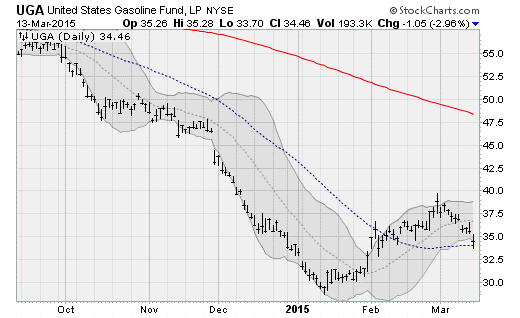You've heard the adage: If something's too good to be true, it probably is. That's probably how many felt when gasoline prices collapsed nearly 61 percent from their high last summer to the low in January. Here in the Seattle area, we saw retail prices below $2 a gallon for the first time since the recession.
Just as quickly as they dropped, though, gas prices reversed course and zoomed higher, climbing 61 percent to a recent high set earlier this month. What was odd was that while crude oil prices rebounded as well, the improvement was on a much smaller scale: West Texas Intermediate rebounded 24 percent from $43.58 a barrel to a high of $53.99 in early February.
Related: Why Oil Prices Will Rebound Before We Know It
No, it wasn't a conspiracy; it was a combination of the largest refinery strike in 35 years — affecting a fifth of the country's capacity — as well as a refinery fire in California and seasonal formulation changes. And the good news is, as these factors fade and crude oil suffers renewed weakness, gas prices are about to start falling again.
On Thursday, it was reported that the United Steelworkers union, which represents the refinery workers, had reached a tentative deal with Shell Oil (RDS.A) after a month of tough negotiations. The deal coming together would be a four-year agreement covering 30,000 workers nationwide and would address concerns about fatigue and workload. A review of hiring practices, wage increases and the protection of health benefits would all be included.
The final deal will need to be voted on, but the end of this saga appears in sight.
That's great news for American consumers surprised by the most rapid rise in fuel prices since 2007, when surging fuel and energy costs helped tip the economy into recession and financial crisis.

As a result, the United States Gasoline ETF (UGA) tested below its 50-day moving average on Friday for the first time since early February and is already down nearly 14 percent from its recent highs. On Thursday, gasoline futures sent their first technical sell signal — based on something called the parabolic stop-and-reverse indicator, for those who want to know — since November. A rapid decline should follow.
Related: Why Stocks Are So Spooked by Great Job Gains
Adding further downward pressure is the renewed selling that's hitting crude oil. West Texas Intermediate fell below the $47.50-a-barrel support level that's held the black stuff aloft since late January. A retest of the lows near $43 a barrel looks likely.
There are a number of catalysts in play here including: Strength in the U.S. dollar (the price of oil maintains an inverse relationship with the greenback), signs of economic weakness (the Atlanta Fed's real-time GDPNow estimate of Q1 growth has fallen to 0.6 percent), still-rising U.S. oil production, and indications that U.S. onshore oil-storage facilities will start topping out sometime in June — potentially flooding the cash oil markets with supply and causing prices to collapse.

Current capacity usage, according to the U.S. Energy Information Administration, is already up to 60 percent vs. 48 percent at this time last year. Already, overall inventories are at 444.4 million barrels — the highest level for this time of year since the 1930s.
I don't know about you, but I'm going to enjoy watching the prices at the corner gas station start creeping lower again, tick by tick, in the days and weeks to come. And for American consumers, who just posted their first decline of three straight months in retail sales since the recession, the extra savings could help reinvigorate spending and help GDP growth rebound in Q2 and beyond.
Top Reads from The Fiscal Times:





